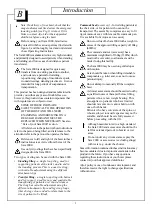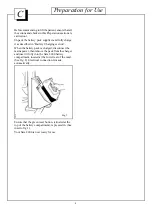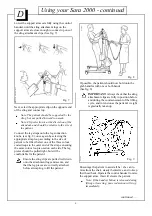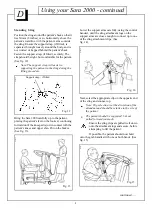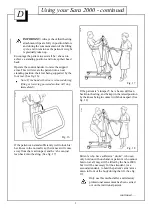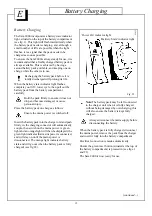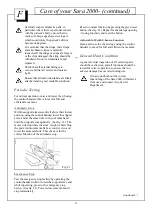
5
Using your Sara 2000
D
Before approaching the Patient
The attendant should always tell the patient what
they are going to do, and have the correct size sling
ready.
Ensure the patient support arms are raised or
lowered sufficiently to avoid approaching the
patient at eye level.
If required, the chassis legs may be opened to go
around the chair, by operating the appropriate button
on the control handset. (See fig. 3).
Note: If the handset button is released during
any function, powered motion will stop
immediately.
The chassis rear castors have brakes which can be
foot operated if required, (see fig. 4), for example,
when leaving the patient unattended, or to keep the
Sara 2000 in position.
Using the Sara 2000 Slings
Select which sling will be required. (See the
description of sling types in the ‘Introduction’
section).
Transfer Sling
With the patient in a sitting position, place the sling
around the patients back, so that it lies
approximately across the shoulder blades, with the
patients arms outside the sling.
Bring the buttock / leg pieces of the sling carefully
under the patient in readiness for connection,
ensuring the pieces are not twisted. (See fig. 5).
Bring the Sara 2000 carefully up to the patient,
placing the patient’s feet on the footrest, continuing
forward, if possible, until the kneepad is just in
contact with the patients knees and upper shins. Put
on the brakes. (See fig. 6).
When moving the Sara 2000 close to the
patient, care must be taken to ensure the
patient’s feet are not positioned between the
footrest and floor.
mP1312,
mP
106
3e,
P1
22
3
Fig. 3
Fig. 4
mP1
313,
P1
06
7b,
d
Fig. 5
mP13
14,
mP
10
43c,
d
Fig. 6
P.
10
65
b/
2
continued .....



